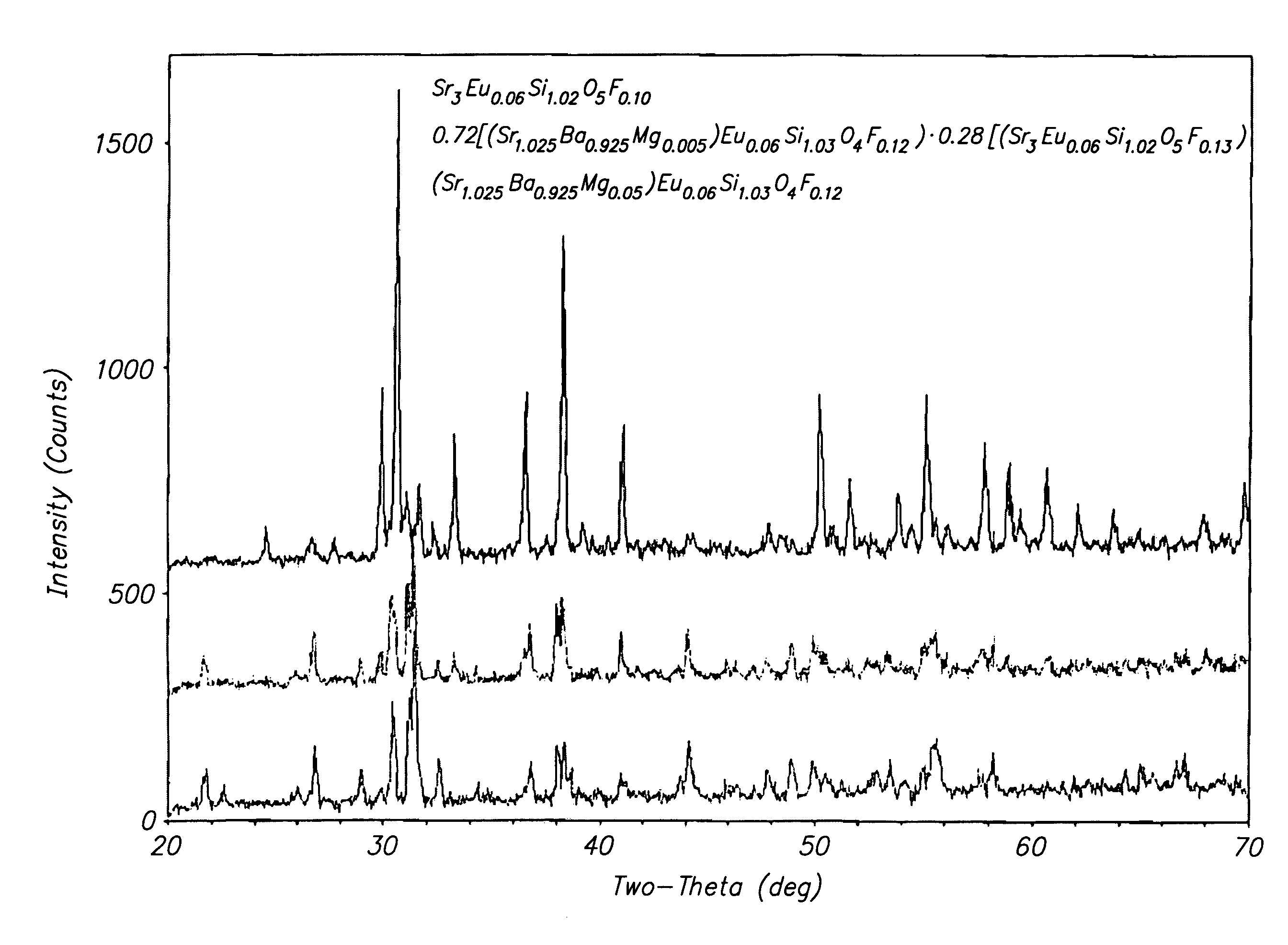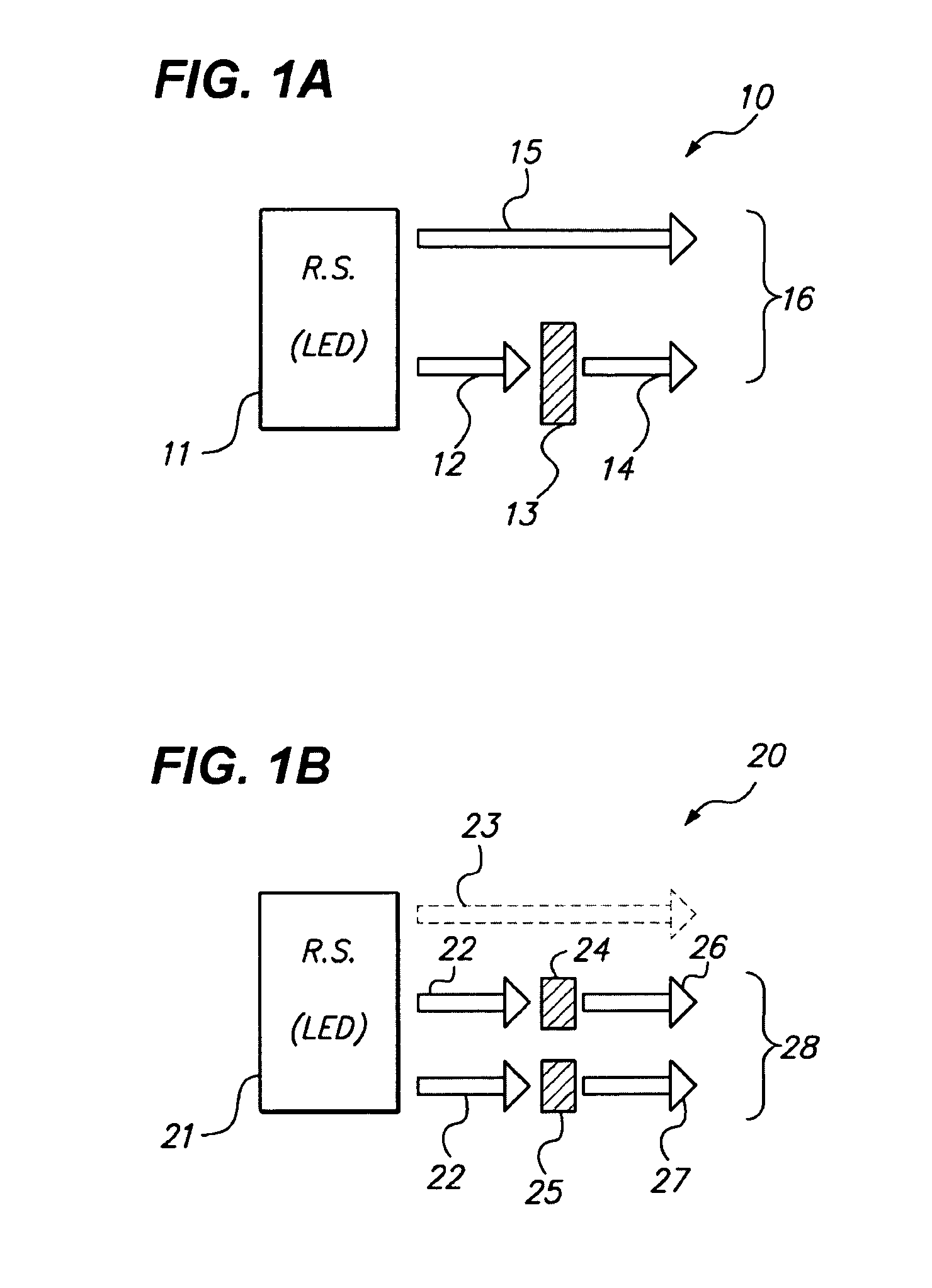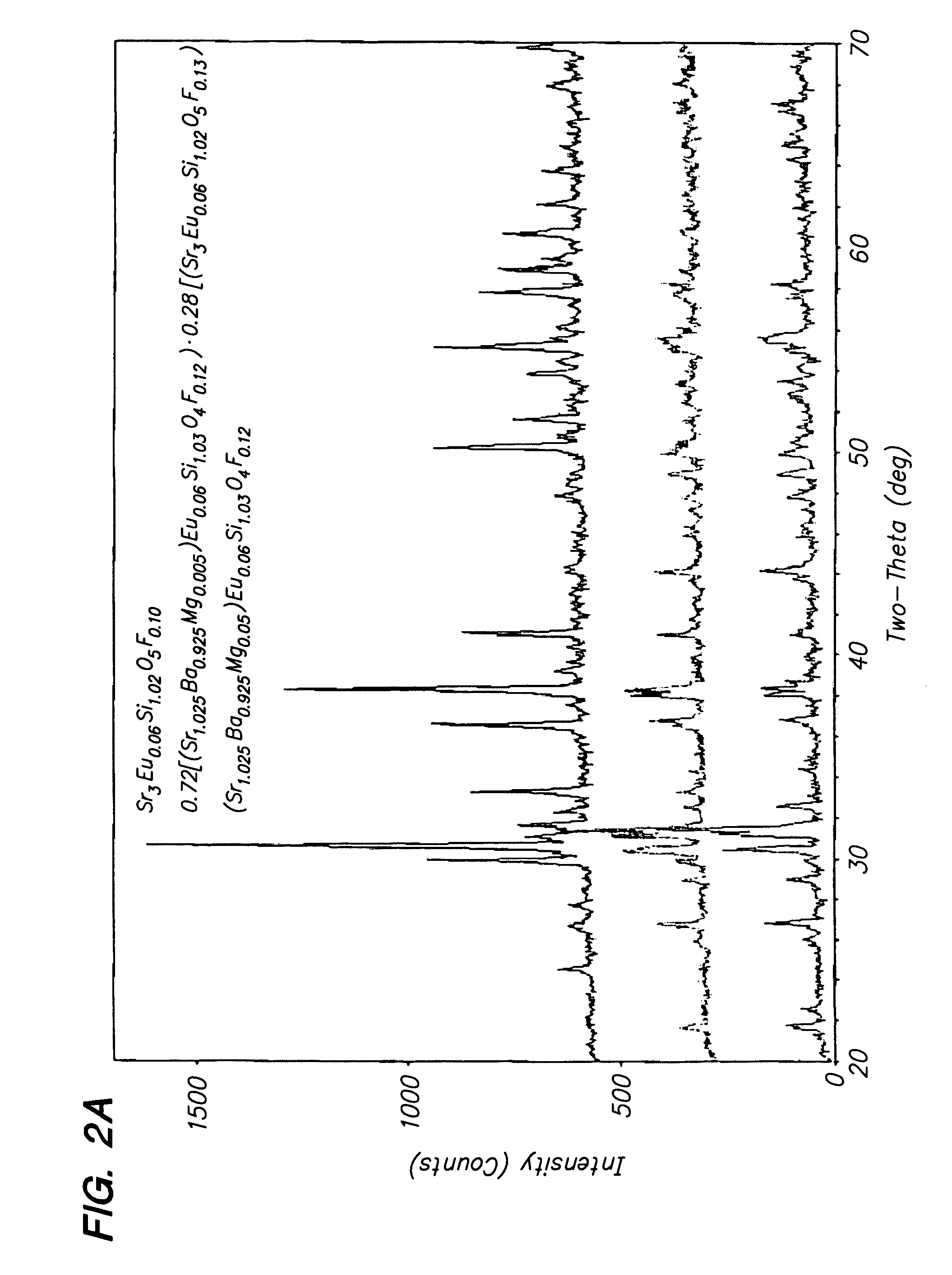Two-phase silicate-based yellow phosphor
a yellow phosphor, silicate-based technology, applied in the direction of discharge tube/lamp details, discharge tube luminescnet screen, discharge tube main electrode, etc., to achieve the effect of high luminescent efficiency, improved temperature stability, and fluorescence efficiency
- Summary
- Abstract
- Description
- Claims
- Application Information
AI Technical Summary
Benefits of technology
Problems solved by technology
Method used
Image
Examples
Embodiment Construction
[0036]The novel phosphors of the present invention comprise two-phase, silicate based compounds. They have a utility in a variety of applications, including white light LED systems, yellow colored illumination systems, and components of color display panels, including the component(s) of an RGB (red, green, blue) backlighting system for plasma display panels. The phosphors of the present invention have particular applications in high-power LED packages which operate at higher junction temperature.
[0037]Various embodiments of the present two-phase, silicate-based phosphors will be described in the following order: first, a general description of these novel, two phase silicate-based compositions will be given, followed by some details about the crystalline nature of the host silicate lattice, the effect of varying the relative amounts of the alkaline earth metal to the silicon in the lattice, and the effect of varying the relative amounts of different alkaline earth metals. Next, a d...
PUM
| Property | Measurement | Unit |
|---|---|---|
| wavelengths | aaaaa | aaaaa |
| wavelength | aaaaa | aaaaa |
| wavelength | aaaaa | aaaaa |
Abstract
Description
Claims
Application Information
 Login to View More
Login to View More - R&D
- Intellectual Property
- Life Sciences
- Materials
- Tech Scout
- Unparalleled Data Quality
- Higher Quality Content
- 60% Fewer Hallucinations
Browse by: Latest US Patents, China's latest patents, Technical Efficacy Thesaurus, Application Domain, Technology Topic, Popular Technical Reports.
© 2025 PatSnap. All rights reserved.Legal|Privacy policy|Modern Slavery Act Transparency Statement|Sitemap|About US| Contact US: help@patsnap.com



